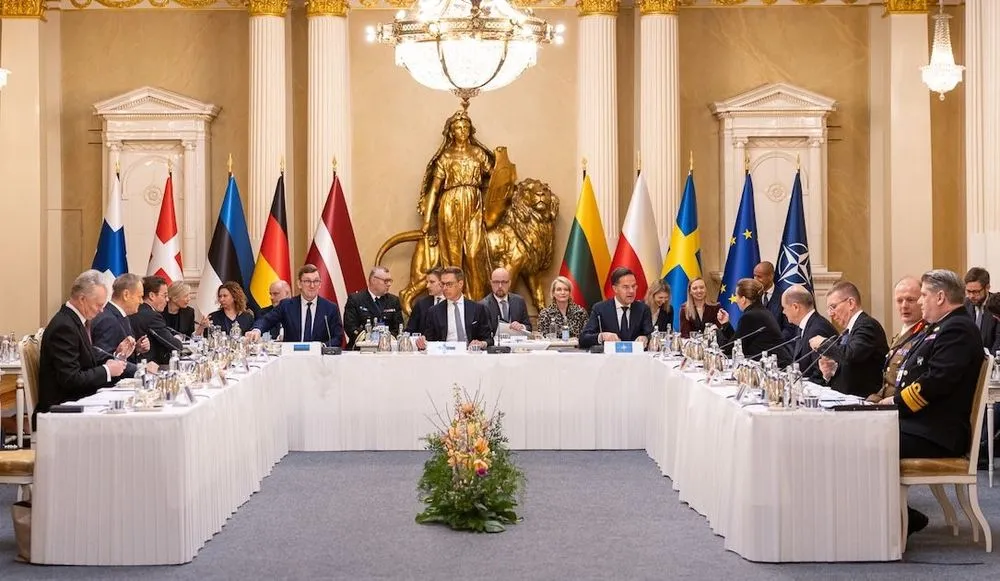Russia warned its 'shadow fleet' could face action from NATO allies
NATO allies bordering the Baltic Sea issued a statement on Tuesday warning they reserve the right to take action against Russian ships that threaten submarine infrastructure.
Although the warning stopped short of military saber-rattling, or even referencing self-defense, it described the vessels as threatening “security, infrastructure and the environment” in both the region and on a global basis.
The joint statement, issued at the Baltic Sea NATO Allies Summit in Helsinki, follows a significant series of undersea cable breaks, most recently on Christmas Day when the Eagle S, an alleged Russian spy ship, is suspected to have dragged its anchor for more than 100km along the seafloor to damage power and telecommunications infrastructure.
The heads of Denmark, Estonia, Finland, Germany, Latvia, Lithuania, Poland and Sweden said the purpose of the meeting in Helsinki was “to address the recent increase in serious incidents damaging critical undersea infrastructure in the Baltic Sea.”
“We are deeply concerned by actions, be they negligent or malicious, which cause damage to or threaten the functioning of critical undersea infrastructure. We strongly condemn acts of sabotage to critical undersea infrastructure,” the statement said.
During the meeting, NATO Secretary General Mark Rutte said the alliance would be launching Baltic Sentry, described as "new military activity" to "enhance NATO's military presence in the Baltic Sea" involving frigates and maritime patrol aircraft, as well as "a small fleet of naval drones."
The summit was held just miles away from the oil port of Kilpilahti in Porvoo, east of Helsinki, where Finnish authorities have detained the Eagle S and imposed travel restrictions on eight members of its crew as investigators continue to probe whether the cables were broken in a criminal act.
The Eagle S, alleged to have been previously used as a Russian spy ship, is part of what Western countries describe as Russia’s “shadow fleet” — a collection of up to 1,000 vessels with opaque ownership structures that sail under flags of convenience to export sanctioned Russian goods, particularly oil.
“Russia's use of the so-called shadow fleet poses a particular threat to the maritime and environmental security in the Baltic Sea region and globally,” the eight allies stated on Tuesday.
“This reprehensible practice also threatens the integrity of undersea infrastructure, increases risks connected to sea-dumped chemical munitions, and significantly supports funding of Russia's illegal war of aggression against Ukraine.”
The United States on Friday issued aggressive sanctions against a number of these vessels and the industry supporting them. Bloomberg reported that three tankers carrying more than 2 million barrels of Russian oil have been left floating in waters off eastern China following the sanctions.
The eight NATO allies on Tuesday pledged “to deter, detect and counter any attempts at sabotage” and warned: “Any attack against our infrastructure will be met with a robust and determined response. We stand ready to attribute hostile actions committed by malignant actors, as appropriate.”
The statement described the activities allegedly undertaken by the Russian shadow fleet as interfering with the allies’ rights to lay submarine cables under the United Nations Convention on the Law of the Sea.
However it did not suggest the operations impeded the right to freedom of navigation, which has become established as a justification for a military response. It is not clear what forms of retorsion are available to states who are the victims of submarine sabotage.
Alexander Martin
is the UK Editor for Recorded Future News. He was previously a technology reporter for Sky News and is also a fellow at the European Cyber Conflict Research Initiative.



